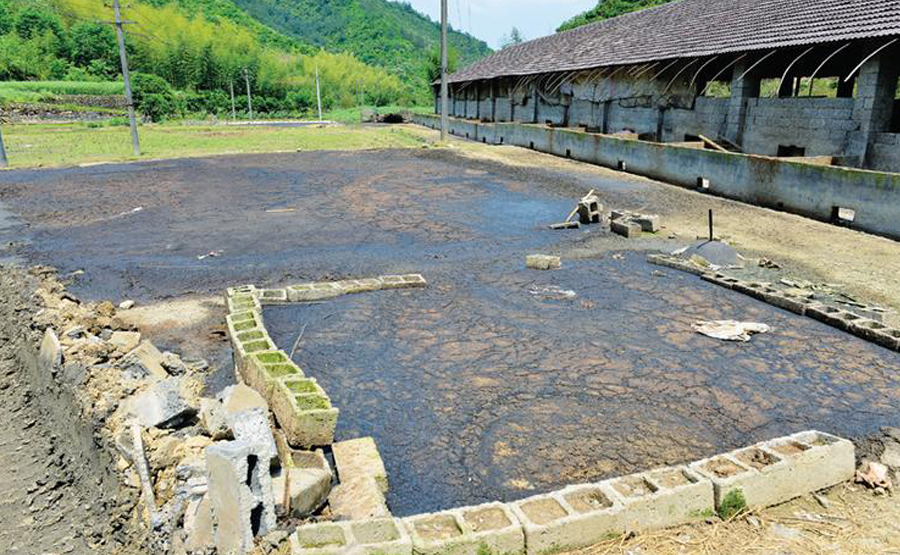The land use of sludge is designed Urban sewage treatment An important aspect to consider when setting up facilities. Sludge treatment and disposal should be considered as a system, including the control of industrial pollution sources, sewage treatment process and sludge treatment and disposal. If the sludge of the sewage plant is not carefully treated, the sewage treatment will be incomplete.
The land use methods of sludge mainly include agricultural, forest and horticultural uses, reconstruction of abandoned mines and other sites, as well as special sludge land disposal sites. The land use of sludge fertilizer can be divided into concentrated sludge fertilizer, dehydrated sludge fertilizer, composted sludge fertilizer and dried sludge fertilizer according to the water content. Although sludge fertilizer has the function of recycling energy in sludge, there are also potential risks of pathogenic bacteria, heavy metals and other toxic substances, and the treatment and transportation are also complex.
We still lack experience in the final disposal and utilization of sludge. For example, the design of sludge drying and incineration devices is more complex. We should learn, introduce, digest and absorb foreign technology and experience, and formulate and improve regulations and standards related to sludge disposal.
Sludge building materials utilization is a method of sludge resource utilization. Sludge and materials generated from incineration can be used to manufacture building materials, such as bricks, cement, ceramsite, glass and biochemical fiber. This method can replace some of the raw materials needed to manufacture building materials, which is of great significance to resource protection.
In addition, landfill disposal of sludge is also a common treatment method. Landfill disposal is to realize the degradation and stabilization of organic matter by using the activities of microorganisms through compaction, soil addition and covering of solid waste. The advantages of landfill disposal are low operation cost, large treatment capacity and obvious effect, but there are also some problems, such as the need for a larger land area and possible groundwater pollution.
Sludge incineration is a common disposal method. Dewatered sludge can be directly incinerated or dried before incineration. The direct incineration process needs to consume a large amount of auxiliary fuel, while drying incineration can improve the heat value of sludge and reduce the use of auxiliary fuel.
In general, for sludge treatment and disposal, we need to comprehensively consider various factors and select appropriate methods according to the specific situation. At the same time, it is also necessary to constantly promote innovation and improve relevant technologies and standards to achieve the dual goals of sludge resource utilization and environmental protection.

Continuing the above discussion, in addition to the land use, building materials use, landfill and incineration of sludge, there are other sludge disposal and utilization methods.
A common method is sludge composting. Composting is to stack and ferment the sludge together with other organic wastes, and decompose the organic matter in the sludge into stable organic fertilizer through the action of microorganisms. Compost sludge can be used for farmland improvement and fertilization to improve soil fertility and crop growth.
In addition, sludge can also be treated and utilized through bioreactor. Bioreactor is a device that uses microorganisms to degrade organic substances in sludge. The common devices are anaerobic digesters and aerobic composting systems. The anaerobic digester places the sludge in an anaerobic environment and converts the organic matter into biogas and organic fertilizer through the fermentation of microorganisms. Aerobic composting system can promote aerobic degradation of microorganisms and produce stable organic fertilizer by introducing oxygen.
In addition, some advanced technologies can also extract and recover valuable components in sludge. For example, through pyrolysis technology, the organic matter in sludge can be converted into biochar, which can be used as soil conditioner or energy source. At the same time, phosphorus, nitrogen and other nutrients in the sludge can also be recycled for agricultural or other purposes.
It should be noted that the sludge characteristics and disposal needs of different regions and enterprises may be different, so appropriate Sludge treatment And utilization methods. At the same time, during sludge treatment and utilization, the discharge of hazardous substances should be strictly controlled to ensure the protection of the environment and human health.
Zhejiang Zhengda Environmental Protection Equipment Co., Ltd.: focusing on Horizontal spiral sedimentation centrifuge, sludge dewatering machine, sludge treatment equipment, centrifugal dewatering machine, sludge dewatering equipment, solid-liquid separation equipment, horizontal spiral centrifuge, centrifuge, mud dewatering machine, mud dewatering equipment, mud treatment equipment, horizontal centrifuge, solid-liquid separator Production, sales and service of various solid-liquid separation equipment. Welcome new and old customers to come for consultation and investigation.
Factory address: No. 812, Jiulong Street, Bihu Town Industrial Zone, Liandu District, Lishui City, Zhejiang Province Telephone: 0578-2788008 Fax :0578-2788681
Email: [email protected] website: //hcsxe.com
Mobile: 15857812218 (Mr. Mao) fifteen billion two hundred and fifty-seven million eight hundred and twenty-six thousand six hundred and nine (Manager Xu) thirteen billion nine hundred and six million seven hundred and eighty-eight thousand three hundred and sixty-seven (Mr. Xu)


